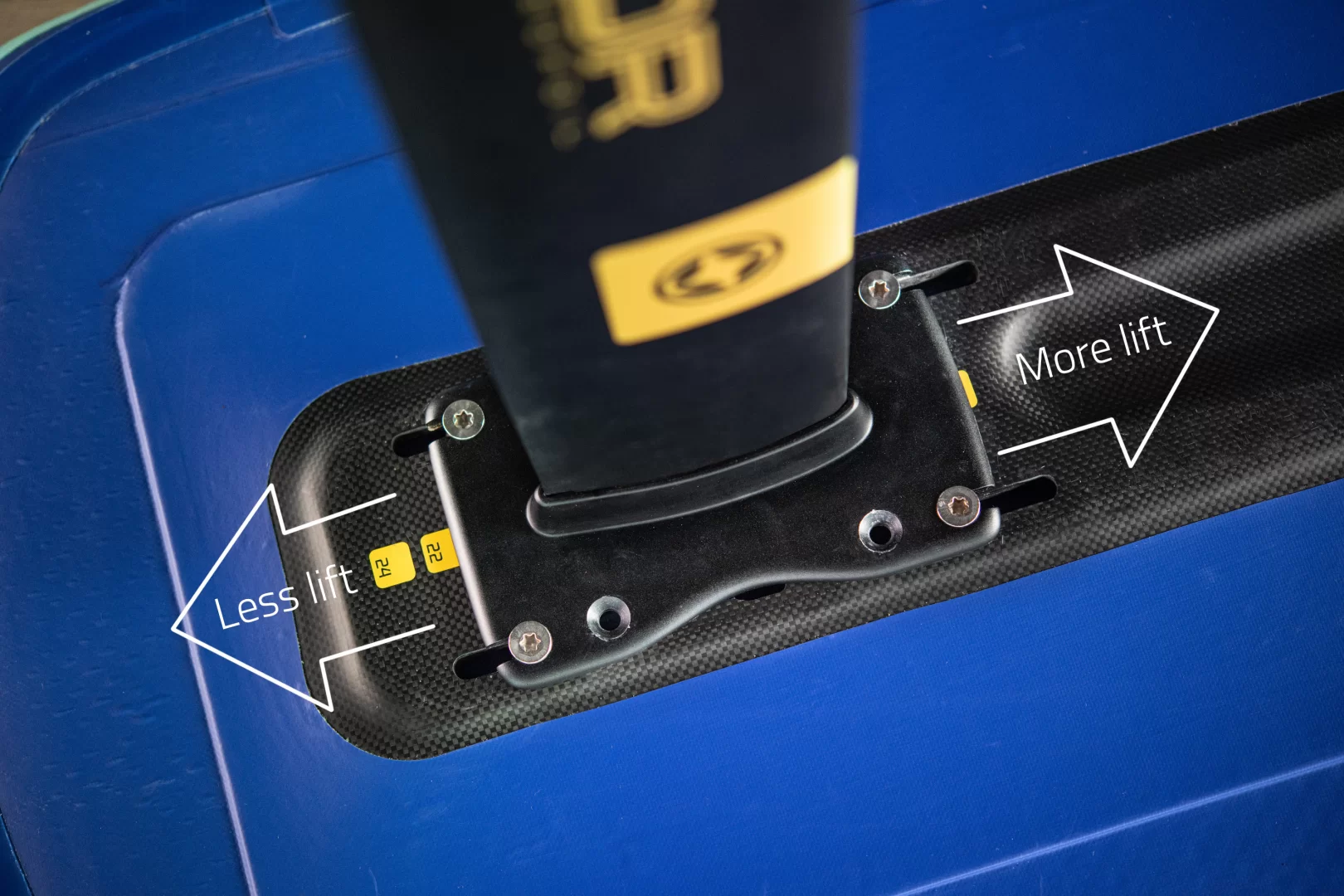Navigator Foil - User Manual
Assembly:
Assemble the hydrofoil as shown below.

Tuning:
There are two ways to tune your hydrofoil:
1. Mast position on the board. Most boards use the double slot system which allows you to move the attachment point on the board forwards or backwards. Move the foil forwards for more lift, or backwards for less lift.

We advise to start with the foil in the middle position. If the board "sticks" to the water and is reluctant to lift, move the foil forwards. If you feel that the board has too much nose lift: a tendency to jump out of the water, or if you have to ride with too much weight on your front foot - move the foil backwards.
Be aware that 1 cm of adjustment can make a big difference! Keep adjusting the foil position in small steps until you find the desired setting.
Stabilizer (tail wing). The angle of the stabilizer may be adjusted between 0 and 2.5 degrees. We advise that you start with a middle setting and adjust to your own preference.
A steeper angle (left picture) will provide more nose lift. This will make the board lift earlier. It will also increase the drag, so the foil will have a lower top speed.
A more horizontal angle (right picture) will decrease the nose lift. The board will need more speed before it begins to lift. It will have reduced drag, so the top speed will be higher.


Tuning tips:
Beginner set-up: Increased drag from the stabilizer will make the foil more stable, make it easier to maintain a straight line, and keep the top speed relatively low. These are characteristics that you might enjoy as a beginner. We recommend putting the stabilizer in the steepest position (more lift, less speed), and moving the foil a little backward to compensate for the increased lift (helps to prevent the foil leaving the water).
Advanced set-up: For highest performance we recommend putting the stabilizer in the horizontal position (less lift, more speed). This not only increases the top speed, but it makes the board and foil more agile, allowing you to make fast and tight turns. Move the foil position slightly forward to maintain an easy lift-off.
Maintenance:
The combination of aluminium, carbon and stainless steel parts makes hydrofoils vulnerable to galvanic corrosion. Galvanic corrosion is a process where the least noble material (in this case aluminium) suffers degradation (in this case in a [salt]water environment). The effect will be strongest where the aluminium contacts with the carbon parts and stainless steel bolts. If ignored, it will cause the bolts to become stuck. Over a longer period of time the aluminium parts will become severely damaged.
How to Prevent Galvanic Corrosion
- After each use, rinse the hydrofoil with fresh water.
- We realise that it is convenient to leave some parts of the hydrofoil assembled. But we advise to completely disassemble all parts at least once a month and rinse them with fresh water.
- Use Unifiber Shield Gel when assembling the bolts. The Shield Gel strongly inhibits the galvanic corrosion process and acts as a lubricant.
